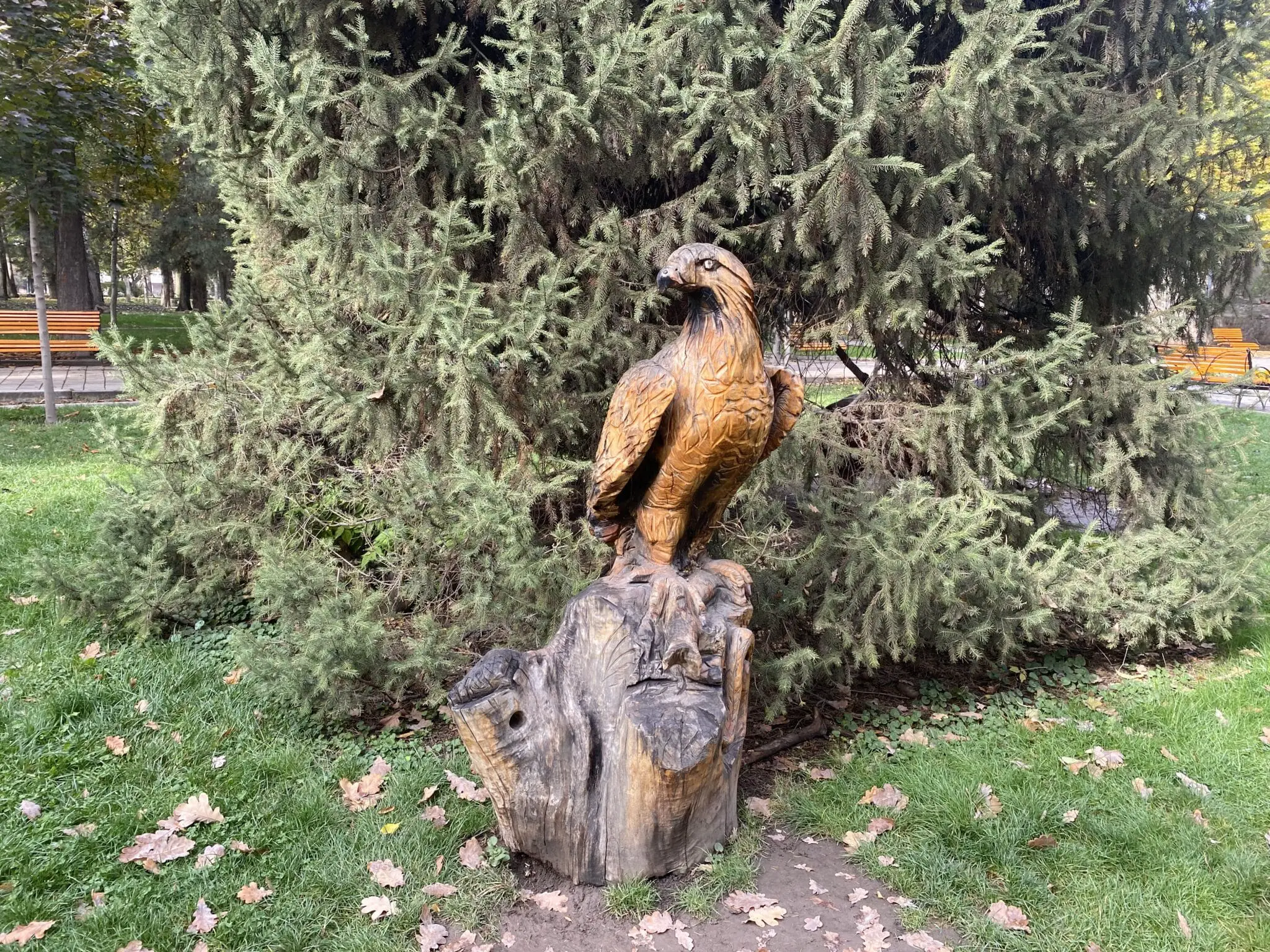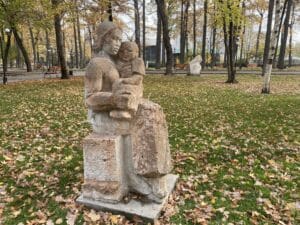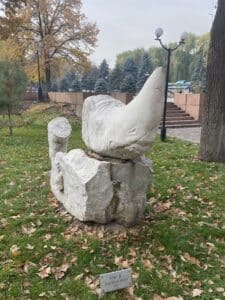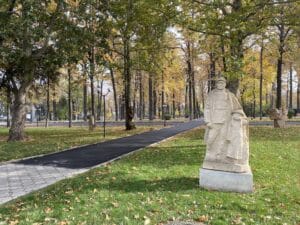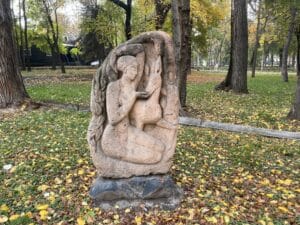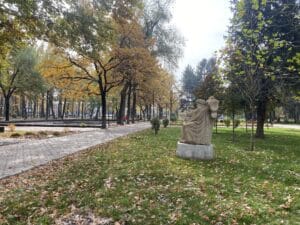The Open Air Sculpture Museum consists of 90 unique sculptures all lining the green and leafy pathways of Oak Park in central Bishkek, Kyrgyzstan.
The sculpture garden was established in 1984 as part of the All Union Sculptors Symposium that took place in Bishkek at that time. The symposium was held under the theme of “Work and Peace” in honor of the 60th anniversary of Kyrgyzstan’s accession to the Soviet Union. Artists and sculptors from all over the Soviet Union met and worked in Bishkek displaying their works in Oak Park.
Walking through the paths with the sculptures will take around 30 minutes and is well worth it. Many of the sculptures are noticeably degraded from being left to the open air for so many years but many have also held up remarkably well.
One sculpture that stood out was “Mother and Child” (1985), created by V. Hegun. The nearly 40-year-old sculpture depicts a mother cradling a young child in her lap. The sculpture resonates with modern life in Bishkek. Kyrgyzstan has a birth rate of three children for every woman, well above the global average, and Bishkek sometimes feels like it is overflowing with children and the mothers and grandmothers who love them.
Another, perhaps more whimsical sculpture that stood out was “Fossilized Rhino” (1985), by V. Friu. It is a sculpture of a rhinoceros head on a vaguely body-like pedestal.
Another sculpture to be on the look out for is “Legend” (1986), by J. Rustamov, which depicts a woman feeding a doe from her hand. This intricate sculpture has aged fairly well despite its exposure to the elements. The artist’s skill and attention to detail still clearly show through in this meaningful sculpture that highlights the Kyrgyz culture’s connections to nature. Another such work is an untitled and unlabeled wood sculpture that looks more recent, perhaps from the last decade or so, depicting an eagle atop a stump. The Kyrgyz have a proud tradition of falconeering.
SRAS graduate Olivia Route also recommends that you check out the far end of the park as well, where there is a monument to Kurmanjan Datka, who was “an important female Kyrgyz military and political leader of the 19th century. She stands elevated in the middle of an arch of columns and looks over a small square that seems to be a popular meeting place for young people.”
The museum is a wonderful place to walk through for its unique sculptures and paths shaded by large oak trees from the elements. Open 24/7, the peaceful park attracts both tourists and locals. It can be busy in the evenings, but is generally quieter in the mornings. Most sculptures in the museum have a steel plaque posted in the ground next to them with the name of the piece and the name of the artists, though there are quite a few without. Nearby are Ala-Too square and the State History Museum, meaning that the park could be paired with other sightseeing as a tourist.


